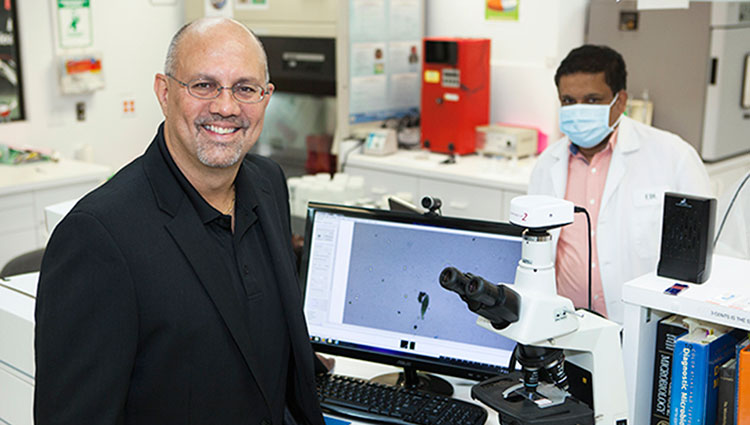CEO Spotlight: Pure Air Control Services CEO Alan Wozniak On Helping America Get Back To The Office

Now that the US is finally flattening that deadly COVID-19 curve, many students are getting ready to return to in-person learning, and companies are welcoming their remote workers back into their buildings. After a year of working from home, how can people be sure they or their loved ones are returning to a safe environment? How can they trust that their superiors followed proper measures to combat a virus that has killed nearly 530,000 people?
According to a recent survey, 68% of employees do not feel completely safe inside their building today. This sentiment is even stronger among surveyed remote workers, with 75% stating they do not feel completely safe returning to working in a building.
Pure Air Control Services, headquartered in Clearwater, Florida, has been specializing in the identification of indoor pollutants and the purification of the indoor air you breathe since 1986. Alan Wozniak, the CEO and visionary behind the company’s environmental diagnostics laboratory says the virus has exceptional staying power, mainly because it has mutated. Wozniak, a nationally recognized indoor air quality (IAQ) expert, warns, “Before returning to work, it is important to understand what air quality baseline conditions are in an office building so that a prescriptive recommendation can be made. This eliminates placing a proverbial bandage on a potential hemorrhaging condition.”
Here are a few warning signs that indicate an office building may not be taking employees’ safety into account.
1. Lack of New Air Cleaning/Monitoring Technology
This pandemic has changed the world in many ways. One of those ways is the technology that developed to adjust to new restrictions and protocols. Experts agree that ample time has passed, allowing businesses to adopt new IAQ technology that
improves both building and in-room air purification, high MERV rated filters, building air flushed, HVAC environmentally cleaned, along with adequate ventilation. Additionally, air quality monitors should be in place for added risk management.
2. No Guidance or Service Records Posted
Since the pandemic onset, the CDC and local health departments have handed down safety guidelines, including such measures as social distancing, masking, hand washing, and directing traffic flow. If signage for these suggestions is not prominently posted, office management is not giving this virus the respect it deserves and not taking safety measures to protect your health seriously. Likewise, if service records for environmental testing and cleaning are not visibly present, how can you be sure your workspace is clean and safe?
3. Cleaning services are status quo
While you were away working from home, the cleaning routines for your building should have increased significantly. The CDC has continually offered guidance regarding special cleaning measures that should have been followed during the pandemic. If you find no evidence of this influx of cleaning services, then it’s very likely your office has become a petri dish for harmful pathogens. With the power to infect you and your co-workers, these pathogens can cause an outbreak that sends you back to remote work or worse, to the hospital.
4. Employee complaints
Returning to your building could cause some irritations, including eye, nose, or throat problems, allergic reactions, asthma attacks, and more. If you experience any of these symptoms or hear of colleagues who are suffering, chances are office management has not adequately cleansed your building. Or, they have used harsh chemicals that cause the symptoms above and not considered the air quality.
5. Dusty Conditions: Furnishings, Ceilings, Air Vents
Dust and dirt buildup is a definite indicator of poor indoor air quality. Building management has a responsibility to welcome employees back to a clean, safe working environment. If particulate buildup is evident on desks, chairs, and other office furniture, you can be confident the HVAC system is also dirty, with poor filtration lurking behind the scenes.
6. Musty Smells
True, your building has been virtually empty for months, maybe even the entire COVID-19 year. However, there should not be musty smells hanging in the air. Even if they are only in select areas, stale or sour smells constitute a significant warning sign of bacterial or mold growth. This dangerous growth can be in the building and inside the HVAC system, causing harmfully poor air quality.
Personal Responsibility
Hopefully, your employer has taken all of the safety measures to ensure a seamless return to work. However, once those clean buildings become inhabited again, outside elements, including germs and possibly the Coronavirus, have a possibility of infiltrating your workspace.
Wozniak warns that in addition to being vigilant about the warning signs above, you should also remember the importance of wearing masks in crowded spaces, washing hands often, and doing your best at social distancing.
By checking for validation that your building is safe and doing your part to keep your workspace free of contaminants, the return to your company workspace should be relatively safe and easy.
Have you read?
Best Hospitality And Hotel Management Schools In The World For 2021.
Rankings. Best Countries. Best Books. Richest List.
Best Fashion Schools In The World For 2021.
Bring the best of the CEOWORLD magazine's global journalism to audiences in the United States and around the world. - Add CEOWORLD magazine to your Google News feed.
Follow CEOWORLD magazine headlines on: Google News, LinkedIn, Twitter, and Facebook.
Copyright 2025 The CEOWORLD magazine. All rights reserved. This material (and any extract from it) must not be copied, redistributed or placed on any website, without CEOWORLD magazine' prior written consent. For media queries, please contact: info@ceoworld.biz











